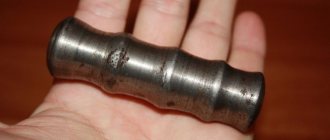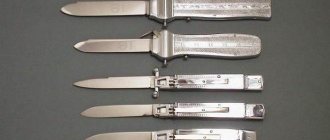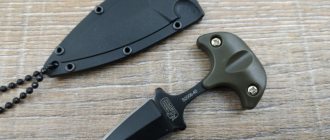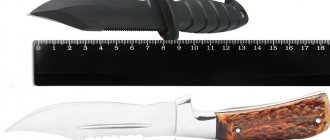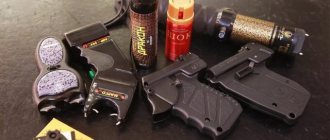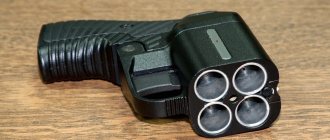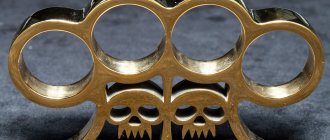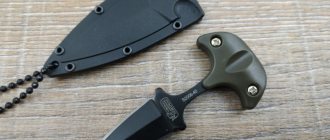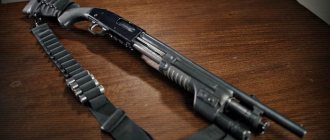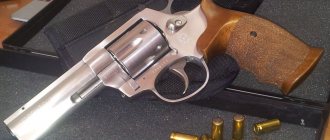The history of brass knuckles
Modern studies of weapons of ancient times have shown that in the 3rd century BC in Greece, the first signs of the above-described device - cestus - arose. The Greeks painted pictures on clay vessels, visualizing parts of brass knuckles in the shape of an old boxing glove. Combatants protected their palms and fingers by wrapping their hand completely in a cestus.
Ancient craftsmen made the first device from straps. The warrior wrapped both limbs in belts and went into battle in the gladiatorial arena. Today, scientists argue about whose prototype the cestus is: the current fighting gloves or a bladed weapon called a brass knuckle.
The above combat devices differ from each other in many ways. The purpose of the glove is to ease the blow and eliminate the risk of injury to the hand. The role of the device from the topic of the article is the opposite - increasing the injuries inflicted on the enemy.
Therefore, many researchers are inclined to believe that the history of brass knuckles originates directly from Greece with the appearance of the first cestus.
Over time, the Greek fighting instrument transformed. Instead of short straps, gladiators wore full-length gloves made from animal skin on their hands up to the shoulder. The product completely covered the phalanges of the fingers with a fur trim.
The craftsmen cut holes in the glove at the beginning of the fingers to place leather rings, the thickness of which reached several cm. They tightened the placed object using leather straps.
The production of modern-shaped brass knuckles in European countries began in the 19th century. Blacksmiths forged holes for fingers in a metal block. In Russia, the production of brass knuckles began from the time of Nicholas II.
There were brass knuckles in Japan too. Since ancient times, the country has created similar items for samurai and ninjas. In the modern world, the ancient Japanese brass knuckles are called yawara. The shape of the product resembles a harmless wooden stick that fits in the palm of your hand. However, in fights, a warrior with such a weapon was much stronger than his opponent due to the concentration of the blow in a certain place.
The meaning of tattoos for girls
In girls, a brass knuckle tattoo can be seen rarely and only in a stylized sketch. On the female body, brass knuckles symbolize the strong and strong-willed character of the owner. But more often this weapon is used by romantic natures.
Instead of holes for fingers, hearts are depicted, which are a symbol of strong love. And the brass knuckles themselves are made in delicate shades unusual for this item. It can also be decorated with flowers, inscriptions, and a crown.
In most cases, girls get such a tattoo because they simply liked the design.
Types of brass knuckles
The Law “On Weapons”, operating at the federal level in Russia, classifies all types of brass knuckles as edged weapons. Criminologists debated the question of where to classify this type of weapon, comparing it with impact-crushing sticks. At the same time, batons intended for police were not classified as bladed weapons.
There are about a dozen types of impact objects in the world that are similar to brass knuckles in shape and use.
However, most forensic specialists do not classify these items as real weapons, since they are mainly used for domestic purposes in the form of a cutting plate or hook.
By types and varieties, brass knuckles are divided into:
- brass knuckles;
- pigs;
- combined brass knuckles, like a folding knife-brass knuckles.
In the 90s, Russian authorities in the criminal world used power brass knuckles. It is unlikely that you will be able to make a good and durable brass knuckles at home and, moreover, the item is prohibited for use.
The described weapon is used in army units: in the Far East, fighters use power brass knuckles for training. Now in China and Japan, these weapons are made for police and self-defense.
Today, Japanese brass knuckle manufacturers have created a compact folding brass knuckle for self-defense. The weapon even fits into a handbag or pocket if folded in half.
The Japanese authorities do not classify the item as a bladed weapon.
According to technical characteristics, in Russia a cold weapon is considered to be one that:
- produces a shock-crushing effect;
- has a solid texture and construction;
- has an impressive size;
- equipped with spikes and other piercing parts.
Following the listed characteristics, we can say for sure that brass knuckles are a bladed weapon that the Russian authorities prohibit from carrying and using.
Tekko-kagi and their varieties
Ninja claws, known as tekko-kagi, first appeared to the public in the late 80s, in ninja films. In the 2000s, a similar design again became extremely popular; Wolverine from the X-Men film universe famously cut hordes of enemies into pieces with them.
Ninja claws were divided into two categories:
- Tekko-kagi with long claws (bear paw);
- Tekko-kagi with spikes on the back of the hand (shuto).
Some sources indicate that long claws were used not only in combat, but also for climbing trees. It is difficult to imagine how one could climb with 30-centimeter claws that weighed several kilograms. The basis for both types of claws were two iron bracelets, which were worn on the palm and wrist. The use of these types is very different.
Tekko-kagi, with long claws on the back of their hands, were not so much a fighting weapon as they were a demoralizing weapon. Ninjas using tekko-kagi were excellent at climbing trees, some even spent the night there. Their attack tactics were unexpected and terrible. Dressed in black clothes, with a demon mask on his face and huge claws, the suddenly appearing ninja caused panic. Those who dared to engage in battle with the “night demon” had a hard time. Only a samurai in battle armor could count on victory. The huge claws easily pierced the leather armor of ordinary soldiers, tearing pieces of meat from the body and ripping open their stomachs.
The design of the tekko-kagi’s claws made it possible to block the blows of swords and spears, and the wounds inflicted by them made people remember the meeting with the “demon” for the rest of their lives.
The second version of the claws served for more peaceful purposes, although if a spy was discovered it served as an excellent weapon. Tekko-kagi with spikes on the inside of the palm were used for climbing walls and trees. They are better known as "shuto".
There was also a leg version of the shuto for legs - ashiko, which could also be used in battle. Now in specialized stores you can freely purchase a modern version of shuto and asiko, which almost completely correspond to their historical counterparts.
Components
Brass knuckles are an illegal weapon that can hardly be made at home. The components of a brass knuckle are: stop, stand, warhead (frame), holes for fingers and spike-like protrusions.
There are other forms of brass knuckles, the components of which are:
- Fire hydrant valve. This type is called "chamomile".
- Knife + brass knuckles. Often, weapons are equipped with additional impact elements - spikes and sharp protrusions.
- Plate + blade.
- Metal in the shape of a cylinder. This device is called a screw. A sharp protrusion resembling a spike is often soldered into the middle of such brass knuckle-like weapons.
- Sharp sharpened curved blades + metal plate. The number and length of blades is 5 pieces, 5-10 cm each. The weapon appeared in China and was called “Claws”.
- A metal round rod with a length of 13 cm and a radius of 1 cm. The ends of the rod are smooth and flat. This is the main component of javara.
- Wooden base in the form of a stick with a diameter of 3 cm + 3 sharp spikes or nails. This weapon is considered an improved javara. In China the device is called "tekko". The nails are driven into the wooden base exactly half their length. It is forbidden to use such a device, as it has great destructive power, especially for the human body.
Nekote fighting claws
The tekko group also includes nekote fighting claws, which were worn on each finger separately and were copied by ninjas from musicians who wore them to play the koto strings. These claws were light and were most often used by female ninjas. The claws soaked in poison, despite the fact that the wounds they left were shallow, always brought painful death.
Japan has always had a wide variety of exotic weapons. Although few people know about traditional tekko, tekko-kagi are known to almost every person under the name “ninja claws”.
The attitude of the authorities towards brass knuckles at different times and the responsibility of citizens for its use
Until some time, state authorities used this type of weapon in the army and police, and even citizens were allowed to carry it.
But as of 2022, power brass knuckles are a prohibited weapon in Russia. Why did the Russian authorities ban power brass knuckles for self-defense? The answer to this question is simple: the item is classified as a bladed weapon.
According to the description, the above-mentioned object, taking into account the relevant criteria, has an impact-crushing effect, the acquisition, wearing, use and, moreover, the production of such items is prohibited, Article 222 of the Criminal Code of the Russian Federation, as well as the Federal Law “On Weapons” (150-FZ) Article 6 .
Cutting templates
Making a craft using a ready-made template is much easier - you don’t need to waste time creating your own sketch, you just need to print one of the options you like and start assembling.
An exciting activity, assembling a brass knuckles from paper with your own hands is perfect for filling your leisure time. The finished craft, which is strong and durable, will allow it to be used in “war” games, reconstructions of events, or theatrical productions.
Will brass knuckles be modified?
Perhaps, but the traditional design easily includes fingers for use and wearing, and it is unlikely that it will be possible to modify anything here.
Most lovers of such weapons, in order not to violate the laws of the Russian Federation, invent the least traumatic brass knuckle-like products, made of wood, and not used for their intended purpose, but mainly for beauty.
Gold brass knuckles are popular among young people and are often featured in photo shoots.
Tattoo styles
Traditionally, such drawings are performed in the genre of realism - imitating iron and the shine of weapons. Additionally, they can weave chains, vine plants, and glass fragments that fly apart from the impact.
If veins and veins and blood discharge are drawn next to the brass knuckle tattoo, then this is already hyperrealism. Finishing is rarely seen; stylization is more common. These are schematic images that well reflect the aesthetic tastes of the wearer.
There are examples of high-quality greywash when only gray-silver and black shades are the priority. They look spare, strict, but impressive.
Check out examples of finished work in the photo gallery. The most interesting solutions can give you an idea and help you form your own style. Watch videos where masters demonstrate their talents, and you can also download files with finished sketches.
Jujutsu weapon - musashi kaiken
However, oddly enough, knives of this type have a household counterpart - the national Eskimo knife - ulu.
A – a modern version of the Eskimo ulu utility knife; B – field multifunctional tool “TOPS ATAX”; B – cutting knife “FOX 2 ULU”; G – tactical hatchet “UlAxe” from “American Kami”.
This Eskimo knife served as the prototype for several interesting knives, including the ATAX field multitool, the 2ULU carving knife, and the UlAxe tactical hatchet. All these knives can be used as self-defense knives with brass knuckles in a critical situation.
Bottom line
Knife - brass knuckles - a compact combat device. Its simple design does not affect functionality. A strong impact can cause serious injury. Even death is possible.
Previous
KnivesRepairing a kitchen knife: how to repair a folding tool
Next
Combat knivesDag and sword weapons: fencing styles and cultural features
Knife "Boker-Plus MA-2"
A much more effective weapon is the small MA-2 self-defense knife, created by Americans Richard Miltner and Julia Adams. In a slightly modified form (simplified design of the cutting edge of the blade and plastic sheath), it was also available in Russian stores as “Boker Plus MA-2”. With a certain grip of this small skeleton knife, it turned into a cutting weapon with a brass knuckle grip.
